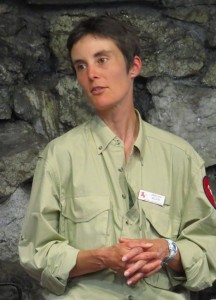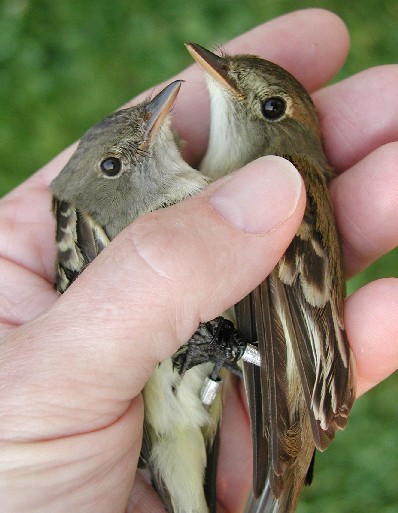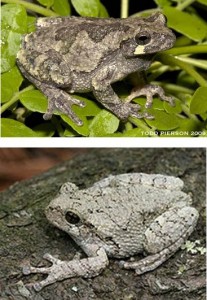Have you heard of the Atlantic Puffin, a species of seabird in the auk family? It is the only puffin native to the Atlantic Ocean.
I have been lucky to see this bird on both, the eastern and western coast of its breeding range. In 1996 when I studied at Bangor University in Wales, UK I first encountered Atlantic Puffins off-shore from Puffin Island, an uninhabited island off the eastern tip of Anglesey, Wales. The island, as you may have guessed, was named after a breeding colony of Atlantic Puffins. Unfortunately puffins no longer breed on this island after the introduction of a fierce predator of eggs and chicks, the brown rat. On the other side of the Atlantic Oceans puffins faced similar problems, they were extirpated from many areas by a combination of egg collection, hunting for meat and feathers, and displacement by expanding Herring and Great Black-backed Gull populations. Now, thanks to Dr. Stephen Kress, I have seen Atlantic Puffins off the coast of Maine, on a small island named Eastern Egg Rock.
Eastern Egg Rock is a small, treeless island in the outer Muscongus Bay area. It is designated the Allan D. Cruickshank Wildlife Sanctuary in honor of Allan Cruickshank, a Maine ornithologist and photographer.
- Eastern Egg Rock
- Allan D. Cruickshank Wildlife Sanctuary
In 2015, when I taught at one of the Hog Island Audubon camps, I was lucky to land on Eastern Egg Rock as the instructor of a group of teenagers enrolled in the Coastal Maine Bird Studies for Teens.
 We landed on the island in one of the traditional fishing boats, a dory.
We landed on the island in one of the traditional fishing boats, a dory.
Access to Eastern Egg Rock is strictly limited, a small group of researchers spends the summer in the single hut on the island monitoring the numerous birds that breed on the island. Common Terns and Laughing Gulls are probably the most common species on the island that establish nests. Less common breeders are Arctic and Roseate Tern, Black Guillemots, Common Eiders and also Atlantic Puffins.
- Laughing Gull
- Common Tern
The Atlantic Puffins are a success story for conservation, the world’s first restored seabird colony. When Dr. Stephen Kress started the project in 1973 the last puffin breeding on the island had been seen in 1885. He was determined to bring a population back to this area and with the translocation of nearly 1,000 young puffins from Newfoundland, and social attraction through decoys and mirror boxes he succeeded!
The first pairs of puffins began nesting on the island in 1981, now more than 100 pairs nest regularly on Eastern Egg Rock and can be seen in the waters of near-by islands.
When we visited the island for the day, we each had the opportunity to spend some time in a small hut (bird hide) of which numerous are distributed across the island. There you sit in solitude, well hidden from the breeding birds that surround you and get to absorb views and sounds.
- view of the island with bird hide in distance
- close-up of one of the bird hides with Common Tern
I brought my recording equipment (a Audio Technica 8035 microphone connected to a Marantz PMD670) and captured the multitude of sounds:
Listen to this recording of Laughing Gulls (note the gull chicks calling in the background!):
Listen to this recording of Common Terns (also with chicks calling in the background):
It is a truly unforgettable experience to become part of this fragile ecosystem for a few hours! You can visit Eastern Egg Rock on a puffin cruise which leaves from New Harbor, ME daily during the summer months and circles the island to provide amazing views of the Atlantic Puffins and other seabirds.
About the Author: Angelika Nelson is the Curator of the Borror Laboratory of Bioacoustics and instructor of Hog Island Audubon camps.




















